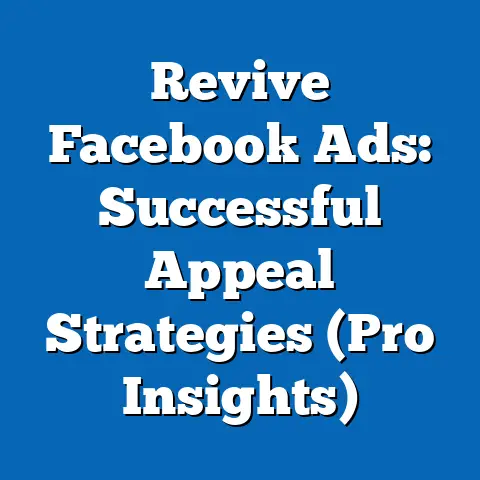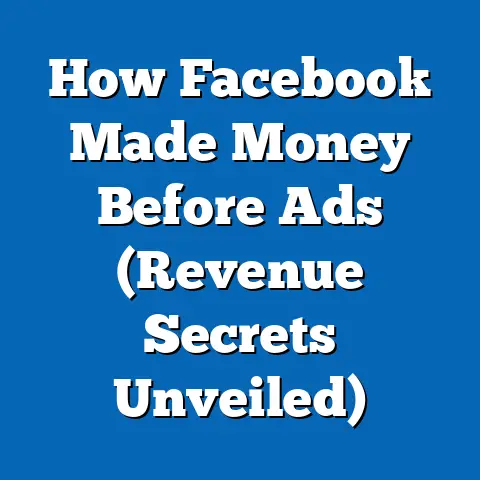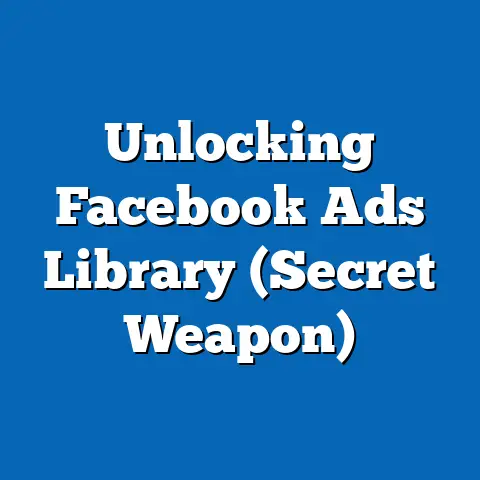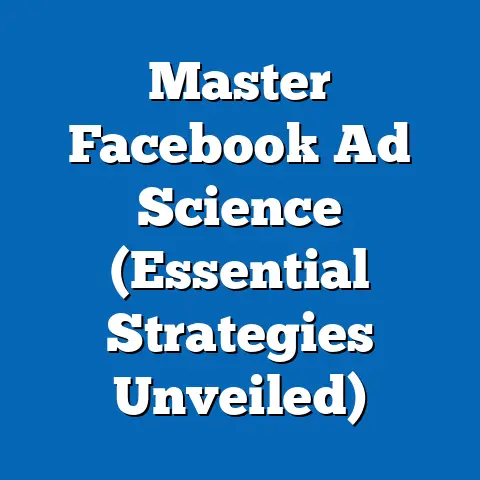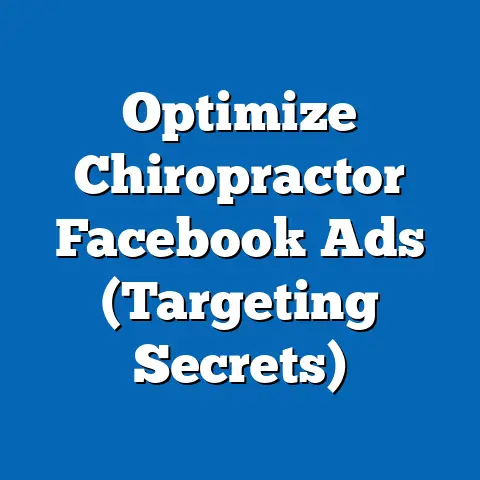Boost Facebook Ad Conversion Rates (Proven Strategies)
I’ve always been fascinated by how seemingly mundane things can be elevated to art through thoughtful design and execution. Take flooring, for instance. Most people see it as a purely functional element, something you walk on. But I see it as a canvas. The right flooring, carefully chosen and installed, can completely transform a room, creating a sense of warmth, luxury, or even excitement. It’s about aesthetics, functionality, and the emotional connection it creates.
This same principle applies to Facebook advertising. Many treat it as a purely transactional activity – throw up an ad, hope for the best. But the truth is, successful Facebook ads are an art form. They require creativity, precision, and a deep understanding of your audience. And just like the right flooring can transform a space, well-crafted ads can transform your business.
One of the most crucial metrics in Facebook advertising is the conversion rate. Think of it as the “wow” factor of your ad. Does it entice people to take action? A high conversion rate means your ads are resonating with your target audience, driving clicks, leads, and ultimately, sales. A low conversion rate? It’s like having mismatched, worn-out flooring – it detracts from the overall experience and leaves a bad impression.
In this guide, I’m going to share proven strategies that will help you elevate your Facebook ads to an art form, transforming them into powerful conversion machines. These aren’t just theoretical concepts; they’re actionable insights I’ve gathered from years of experience managing Facebook ad campaigns for various businesses. Get ready to roll up your sleeves and start crafting ads that not only look good but also deliver results.
Understanding Facebook Ad Conversion Rates
What is a Conversion Rate?
In the simplest terms, a conversion rate is the percentage of people who see your ad and then take a desired action. This action could be anything from clicking on a link and visiting your website to filling out a lead form, making a purchase, or downloading an app.
Here’s a basic formula:
Conversion Rate = (Number of Conversions / Total Number of Ad Interactions) * 100
For example, if 1000 people see your ad and 50 of them make a purchase, your conversion rate is 5%.
Why Are Conversion Rates Important?
Conversion rates are the lifeblood of any successful Facebook advertising campaign. They tell you whether your ads are working effectively and generating a return on your investment. Here’s why they matter:
- Return on Ad Spend (ROAS): Higher conversion rates directly translate to a higher ROAS. You’re getting more value for every dollar you spend.
- Cost-Effectiveness: By improving conversion rates, you can lower your cost per acquisition (CPA), which is the cost of acquiring a new customer.
- Ad Relevance: A high conversion rate indicates that your ads are relevant to your target audience, which can improve your ad quality score and lower your ad costs.
- Business Growth: Ultimately, higher conversion rates lead to increased sales, revenue, and business growth.
I remember working with a client who was struggling to generate sales from their Facebook ads. They were getting plenty of clicks, but very few people were actually buying their product. After analyzing their campaign, I realized their conversion rate was abysmal – less than 0.5%. We implemented some of the strategies I’m going to share with you, and within a few weeks, we were able to increase their conversion rate to over 3%, resulting in a significant boost in sales.
Setting Clear Goals
Before you can improve your conversion rates, you need to define what a “conversion” means for your business. What do you want people to do after seeing your ad? Here are some common goals:
- Website Traffic: Driving traffic to your website to showcase your products or services.
- Lead Generation: Collecting leads through a form or landing page.
- Sales: Generating direct sales of your products or services.
- App Downloads: Encouraging users to download your mobile app.
- Brand Awareness: Increasing brand visibility and recognition.
Once you’ve defined your goals, you can track your conversion rates and measure the success of your campaigns.
Factors Influencing Conversion Rates
Many factors influence your Facebook ad conversion rates. Here are some of the most important:
- Ad Copy: The words you use in your ad play a crucial role in persuading people to take action.
- Visuals: Eye-catching images and videos can grab attention and make your ads more engaging.
- Targeting: Reaching the right audience with your ads is essential for driving conversions.
- Landing Page Experience: The page people land on after clicking your ad should be relevant, user-friendly, and optimized for conversions.
- Offer: A compelling offer, such as a discount or free trial, can incentivize people to take action.
- Ad Placement: Where your ad appears on Facebook (e.g., News Feed, Right Column, Audience Network) can impact its performance.
Statistics and Data
To underscore the importance of conversion rates, let’s look at some statistics:
- According to WordStream, the average Facebook ad conversion rate across all industries is around 9.21%.
- However, conversion rates can vary significantly depending on the industry. For example, the retail industry typically has lower conversion rates than the finance or insurance industries.
- A study by HubSpot found that companies with 30 or more landing pages generate 7 times more leads than those with fewer than 10. This highlights the importance of optimizing your landing page experience for conversions.
Key Takeaway: Understanding what conversion rates are, why they matter, and the factors that influence them is the first step to improving your Facebook advertising performance.
Next Step: Define your conversion goals and start tracking your conversion rates.
Crafting Compelling Ad Copy
The Power of Persuasion
I’ve always believed that words have power. In the world of Facebook advertising, compelling ad copy is your most powerful tool for persuading people to take action. It’s what grabs their attention, sparks their interest, and motivates them to click, learn more, or buy.
Think of your ad copy as a mini sales pitch. You have a limited amount of space and time to convince someone that your product or service is worth their attention and money. That’s why it’s so important to craft your ad copy carefully, using persuasive language and a clear call to action.
Understanding Your Target Audience
The first step in writing compelling ad copy is understanding your target audience. Who are you trying to reach? What are their needs, wants, and pain points? What language do they use? The more you know about your audience, the better you can tailor your message to resonate with them.
I often start by creating detailed buyer personas. These are fictional representations of your ideal customers, based on research and data. They include information such as demographics, interests, behaviors, and motivations.
For example, if you’re selling organic baby food, your target audience might be millennial parents who are health-conscious and environmentally aware. Your ad copy should reflect these values, using language that resonates with this demographic.
Proven Techniques for Writing Compelling Headlines
Your headline is the first thing people see when they encounter your ad. It’s your chance to make a strong first impression and grab their attention. Here are some proven techniques for writing compelling headlines:
- Use Numbers: Numbers are eye-catching and can make your headlines more specific and credible. For example, “5 Ways to Save Money on Your Next Vacation.”
- Ask Questions: Questions can pique curiosity and encourage people to click. For example, “Are You Tired of Feeling Tired?”
- Use Power Words: Power words are emotionally charged words that can evoke a strong response. For example, “Discover,” “Unlock,” “Secret,” “Proven.”
- Highlight Benefits: Focus on the benefits of your product or service, rather than just the features. For example, “Get a Flatter Stomach in Just 30 Days.”
- Create Urgency: Urgency can motivate people to take action immediately. For example, “Limited Time Offer: 50% Off!”
Crafting Effective Calls to Action (CTAs)
Your call to action is the final nudge that encourages people to take the desired action. It should be clear, concise, and compelling. Here are some examples of effective CTAs:
- Shop Now: Use this CTA when you want people to make a purchase.
- Learn More: Use this CTA when you want people to visit your website and learn more about your product or service.
- Sign Up: Use this CTA when you want people to subscribe to your email list or create an account.
- Download Now: Use this CTA when you want people to download an app or resource.
- Get Started: Use this CTA when you want people to start a free trial or demo.
Examples of High-Converting Ad Copy
Let’s look at some examples of high-converting ad copy and analyze what makes them effective:
-
Example 1: Shopify
- Headline: Start Your Online Store Today
- Body: “Shopify is the leading e-commerce platform for businesses of all sizes. Get a free trial and start selling online today!”
- CTA: Start Free Trial
- Analysis: This ad copy is effective because it’s clear, concise, and highlights the benefits of using Shopify. It also includes a strong call to action and a free trial offer.
-
Example 2: Grammarly
-
Headline: Improve Your Writing Instantly
- Body: “Grammarly is the world’s leading grammar and spell checker. Get instant feedback on your writing and improve your communication skills.”
- CTA: Get Grammarly
- Analysis: This ad copy is effective because it focuses on the benefits of using Grammarly and uses strong power words like “instantly.” It also includes a clear call to action.
-
Example 3: Dollar Shave Club
-
Headline: Get Amazing Razors for Just $1
- Body: “Dollar Shave Club delivers high-quality razors to your door for just $1 a month. Stop overpaying for razors and join the club today!”
- CTA: Join the Club
- Analysis: This ad copy is effective because it highlights the value proposition of Dollar Shave Club and uses a compelling price point. It also includes a clear call to action.
Example 1: Shopify
- Headline: Start Your Online Store Today
- Body: “Shopify is the leading e-commerce platform for businesses of all sizes. Get a free trial and start selling online today!”
- CTA: Start Free Trial
- Analysis: This ad copy is effective because it’s clear, concise, and highlights the benefits of using Shopify. It also includes a strong call to action and a free trial offer.
-
Example 2: Grammarly
-
Headline: Improve Your Writing Instantly
- Body: “Grammarly is the world’s leading grammar and spell checker. Get instant feedback on your writing and improve your communication skills.”
- CTA: Get Grammarly
- Analysis: This ad copy is effective because it focuses on the benefits of using Grammarly and uses strong power words like “instantly.” It also includes a clear call to action.
-
Example 3: Dollar Shave Club
-
Headline: Get Amazing Razors for Just $1
- Body: “Dollar Shave Club delivers high-quality razors to your door for just $1 a month. Stop overpaying for razors and join the club today!”
- CTA: Join the Club
- Analysis: This ad copy is effective because it highlights the value proposition of Dollar Shave Club and uses a compelling price point. It also includes a clear call to action.
Example 2: Grammarly
Headline: Improve Your Writing Instantly
Example 3: Dollar Shave Club
Headline: Get Amazing Razors for Just $1
Key Takeaway: Compelling ad copy is essential for driving conversions on Facebook. By understanding your target audience, using proven techniques for writing headlines and CTAs, and analyzing successful ad copy examples, you can craft ads that resonate with your audience and persuade them to take action.
Next Step: Start crafting compelling ad copy that speaks directly to your target audience and highlights the benefits of your product or service.
Designing Eye-Catching Visuals
The Power of Visuals
In today’s visually driven world, eye-catching visuals are more important than ever. On Facebook, where users are bombarded with content, your visuals are what grab their attention and make them stop scrolling.
I’ve found that visuals can make or break an ad campaign. A well-designed image or video can significantly increase engagement, click-through rates, and ultimately, conversions. Conversely, a poorly designed visual can turn people off and make them scroll right past your ad.
Selecting Images and Videos
The key to selecting effective visuals is to choose images and videos that resonate with your target audience and accurately represent your brand. Here are some best practices:
- Use High-Quality Images: Avoid using blurry, pixelated, or low-resolution images.
- Choose Relevant Images: Make sure your images are relevant to your product or service and the message you’re trying to convey.
- Showcase Your Product: If you’re selling a product, showcase it in a visually appealing way.
- Use Videos: Videos can be highly engaging and can effectively demonstrate the value of your product or service.
- Use People: Images of people can create an emotional connection with your audience.
- Test Different Visuals: A/B test different images and videos to see what resonates best with your audience.
Branding and Consistency
Your visuals should also be consistent with your brand. Use your brand colors, fonts, and logo to create a cohesive and recognizable visual identity. This will help people associate your ads with your brand and build trust.
I’ve seen many businesses make the mistake of using inconsistent visuals in their ads. This can confuse people and make your brand look unprofessional. Consistency is key to building brand recognition and trust.
Case Studies of Successful Ad Campaigns
Let’s look at some case studies of successful ad campaigns that utilized strong visuals effectively:
-
Example 1: Airbnb
- Airbnb often uses stunning photos of unique properties in their ads. These visuals are highly engaging and inspire people to book a vacation.
- Analysis: Airbnb’s visuals are effective because they showcase the unique benefits of using their platform and appeal to people’s desire for travel and adventure.
-
Example 2: Nike
-
Nike is known for its powerful and inspiring videos that feature athletes pushing their limits. These videos resonate with their target audience and reinforce their brand message.
- Analysis: Nike’s visuals are effective because they tap into people’s emotions and inspire them to achieve their goals.
-
Example 3: Warby Parker
-
Warby Parker uses clean and modern product photos in their ads. These visuals are visually appealing and showcase the quality of their eyewear.
- Analysis: Warby Parker’s visuals are effective because they are simple, elegant, and accurately represent their brand.
Example 1: Airbnb
- Airbnb often uses stunning photos of unique properties in their ads. These visuals are highly engaging and inspire people to book a vacation.
- Analysis: Airbnb’s visuals are effective because they showcase the unique benefits of using their platform and appeal to people’s desire for travel and adventure.
-
Example 2: Nike
-
Nike is known for its powerful and inspiring videos that feature athletes pushing their limits. These videos resonate with their target audience and reinforce their brand message.
- Analysis: Nike’s visuals are effective because they tap into people’s emotions and inspire them to achieve their goals.
-
Example 3: Warby Parker
-
Warby Parker uses clean and modern product photos in their ads. These visuals are visually appealing and showcase the quality of their eyewear.
- Analysis: Warby Parker’s visuals are effective because they are simple, elegant, and accurately represent their brand.
Example 2: Nike
Nike is known for its powerful and inspiring videos that feature athletes pushing their limits. These videos resonate with their target audience and reinforce their brand message.
Example 3: Warby Parker
Warby Parker uses clean and modern product photos in their ads. These visuals are visually appealing and showcase the quality of their eyewear.
Key Takeaway: Eye-catching visuals are essential for capturing attention and enhancing engagement on Facebook. By selecting high-quality, relevant images and videos, maintaining brand consistency, and analyzing successful ad campaign examples, you can create visuals that resonate with your audience and drive conversions.
Next Step: Start designing eye-catching visuals that accurately represent your brand and appeal to your target audience.
Targeting the Right Audience
The Power of Precision
I’ve always believed that targeting is the most critical aspect of Facebook advertising. You can have the most compelling ad copy and eye-catching visuals, but if you’re not showing your ads to the right people, you’re wasting your money.
Think of it like this: you wouldn’t try to sell snowshoes to people living in Florida. It’s all about matching your product or service to the needs and interests of your target audience. Facebook’s targeting options allow you to do just that, with incredible precision.
Facebook’s Targeting Options
Facebook offers a wide range of targeting options, including:
- Demographics: Target people based on age, gender, location, education, and relationship status.
- Interests: Target people based on their interests, hobbies, and activities.
- Behaviors: Target people based on their online behavior, such as purchase history, device usage, and travel habits.
- Custom Audiences: Target people who have already interacted with your business, such as website visitors, email subscribers, and app users.
- Lookalike Audiences: Target people who are similar to your existing customers or website visitors.
Creating Custom Audiences
Custom audiences are a powerful way to target people who have already shown an interest in your business. You can create custom audiences from:
- Website Traffic: Target people who have visited specific pages on your website.
- Email List: Target people who are on your email list.
- App Activity: Target people who have used your mobile app.
- Offline Activity: Target people who have interacted with your business offline, such as in-store purchases.
Leveraging Lookalike Audiences
Lookalike audiences are a great way to expand your reach and find new customers who are similar to your existing customers. Facebook will analyze your source audience (e.g., your customer list) and identify common characteristics and interests. It will then find other Facebook users who share those characteristics and interests.
I’ve found that lookalike audiences can be incredibly effective for driving conversions. They allow you to reach a highly targeted audience that is likely to be interested in your product or service.
Refining Audience Targeting
Audience targeting is not a one-time activity. You need to constantly monitor your campaign performance and refine your targeting based on the data you collect. Pay attention to metrics such as:
- Click-Through Rate (CTR): This measures the percentage of people who click on your ad after seeing it.
- Conversion Rate: This measures the percentage of people who take the desired action after clicking on your ad.
- Cost Per Acquisition (CPA): This measures the cost of acquiring a new customer.
If you’re seeing low CTRs or conversion rates, it may be a sign that you’re not targeting the right audience. Experiment with different targeting options and see what works best for your business.
Key Takeaway: Targeting the right audience is essential for maximizing ad effectiveness on Facebook. By leveraging Facebook’s targeting options, creating custom and lookalike audiences, and refining your targeting over time, you can reach potential customers who are most likely to be interested in your product or service.
Next Step: Start experimenting with different targeting options and creating custom and lookalike audiences to reach the right people with your ads.
Utilizing A/B Testing for Optimization
The Scientific Approach to Advertising
I’m a big believer in data-driven decision-making. In the world of Facebook advertising, that means using A/B testing to optimize your campaigns and improve your conversion rates.
A/B testing, also known as split testing, is a method of comparing two versions of an ad to see which one performs better. You create two versions of your ad, each with a slight variation (e.g., different headline, image, or call to action), and then show them to a random sample of your target audience. The ad that performs better is the winner.
How to Conduct A/B Tests on Facebook Ads
Here’s a step-by-step guide on how to conduct A/B tests on Facebook ads:
- Choose a Variable to Test: Start by identifying a variable that you want to test. This could be anything from your headline to your image to your target audience.
- Create Two Versions of Your Ad: Create two versions of your ad, each with a slight variation of the variable you’re testing.
- Set Up Your Campaign: Set up your campaign in Facebook Ads Manager, making sure to enable the A/B testing feature.
- Run Your Test: Run your test for a sufficient period of time to collect enough data to make a statistically significant decision.
- Analyze Your Results: Analyze your results to see which ad performed better.
- Implement the Winning Ad: Implement the winning ad and continue to test other variables to further optimize your campaign.
Key Elements to Test
Here are some key elements to test in your Facebook ads:
-
Example 1: HubSpot
- HubSpot conducted an A/B test on their call to action button and found that changing the text from “Get Your Free Ebook” to “Download Now” increased their conversion rate by 17%.
- Analysis: This simple change had a significant impact on their conversion rate.
-
Example 2: Unbounce
-
Unbounce conducted an A/B test on their landing page headline and found that changing the headline from “The Landing Page Platform” to “Build High-Converting Landing Pages” increased their conversion rate by 20%.
- Analysis: This change made it clear to visitors what Unbounce does and how it can benefit them.
- Example 3: KlientBoost
- KlientBoost, a PPC agency, ran A/B tests on Facebook ads for a client in the insurance industry. They tested different images and headlines and were able to increase their conversion rate by 89% by using an image of a real person smiling and a headline that asked a question.
Example 1: HubSpot
- HubSpot conducted an A/B test on their call to action button and found that changing the text from “Get Your Free Ebook” to “Download Now” increased their conversion rate by 17%.
- Analysis: This simple change had a significant impact on their conversion rate.
-
Example 2: Unbounce
-
Unbounce conducted an A/B test on their landing page headline and found that changing the headline from “The Landing Page Platform” to “Build High-Converting Landing Pages” increased their conversion rate by 20%.
- Analysis: This change made it clear to visitors what Unbounce does and how it can benefit them.
- Example 3: KlientBoost
- KlientBoost, a PPC agency, ran A/B tests on Facebook ads for a client in the insurance industry. They tested different images and headlines and were able to increase their conversion rate by 89% by using an image of a real person smiling and a headline that asked a question.
Example 2: Unbounce
Unbounce conducted an A/B test on their landing page headline and found that changing the headline from “The Landing Page Platform” to “Build High-Converting Landing Pages” increased their conversion rate by 20%.
Key Takeaway: A/B testing is a powerful tool for optimizing your Facebook ad campaigns and improving your conversion rates. By systematically testing different variables and analyzing the results, you can identify what works best for your business and make data-driven decisions that drive results.
Next Step: Start conducting A/B tests on your Facebook ads to optimize your campaigns and improve your conversion rates.
Analyzing and Interpreting Metrics
The Language of Data
I often tell people that data is the language of digital marketing. If you want to succeed in Facebook advertising, you need to be fluent in this language. That means understanding the various metrics available in Facebook Ads Manager and knowing how to interpret them to gain insights into your ad performance.
Crucial Metrics for Measuring Success
Here are some of the most crucial metrics for measuring success in Facebook advertising:
- Impressions: The number of times your ad was displayed.
- Reach: The number of unique people who saw your ad.
- Click-Through Rate (CTR): The percentage of people who clicked on your ad after seeing it.
- Cost Per Click (CPC): The average cost you paid for each click on your ad.
- Conversion Rate: The percentage of people who took the desired action after clicking on your ad.
- Cost Per Acquisition (CPA): The cost of acquiring a new customer.
- Return on Ad Spend (ROAS): The revenue you generated for every dollar you spent on advertising.
Interpreting Data for Insights
It’s not enough to just track these metrics. You need to know how to interpret them to gain insights into your ad performance. Here are some tips:
- Look for Trends: Identify trends in your data over time. Are your conversion rates increasing or decreasing? Are your costs going up or down?
- Compare Different Campaigns: Compare the performance of different campaigns to see which ones are working best.
- Segment Your Data: Segment your data by demographics, interests, and behaviors to see which audience segments are most responsive.
- Identify Problem Areas: Identify areas where your campaigns are underperforming. Are you getting plenty of impressions but few clicks? Is your conversion rate low?
- Ask “Why?”: When you identify a problem area, ask “Why?” Why are people not clicking on my ad? Why is my conversion rate low?
Adjusting Campaigns Based on Data Analysis
Once you’ve analyzed your data and gained insights into your ad performance, you can adjust your campaigns to improve your results. Here are some tips:
- Improve Your Ad Copy: If you’re getting plenty of impressions but few clicks, your ad copy may not be compelling enough. Try testing different headlines, body copy, and calls to action.
- Optimize Your Visuals: If your click-through rate is low, your visuals may not be eye-catching enough. Try testing different images and videos.
- Refine Your Targeting: If your conversion rate is low, you may not be targeting the right audience. Try experimenting with different targeting options.
- Improve Your Landing Page: If people are clicking on your ad but not converting, your landing page may not be user-friendly or optimized for conversions. Make sure your landing page is relevant, easy to navigate, and includes a clear call to action.
Key Takeaway: Analyzing and interpreting metrics is essential for measuring success and optimizing your Facebook ad campaigns. By understanding the various metrics available in Facebook Ads Manager, interpreting data to gain insights, and adjusting your campaigns based on data analysis, you can improve your ad performance and drive better results.
Next Step: Start tracking your Facebook ad metrics, analyzing your data, and adjusting your campaigns based on your findings.
Conclusion
Boosting Facebook ad conversion rates is not just about following a checklist of tactics. It’s about understanding the art and science of advertising. It’s about crafting compelling ad copy, designing eye-catching visuals, targeting the right audience, and constantly testing and optimizing your campaigns.
Just as the right flooring can transform a space, well-crafted ads can transform your business’s online presence and sales. It requires attention to detail, a deep understanding of your audience, and a willingness to experiment and learn.
I’ve shared with you proven strategies that I’ve used to help businesses of all sizes improve their Facebook ad performance. These strategies are not just theoretical concepts; they’re actionable insights that you can implement today.
So, take the first step towards enhancing your ad campaigns today. Start by defining your conversion goals, crafting compelling ad copy, designing eye-catching visuals, targeting the right audience, conducting A/B tests, and analyzing your metrics.
Remember, the world of Facebook advertising is constantly evolving. What works today may not work tomorrow. That’s why it’s so important to stay up-to-date on the latest trends and best practices.
By embracing the art and science of Facebook advertising, you can transform your ads into powerful conversion machines that drive results for your business. Now go out there and start creating ads that not only look good but also deliver real value to your audience and your bottom line.

